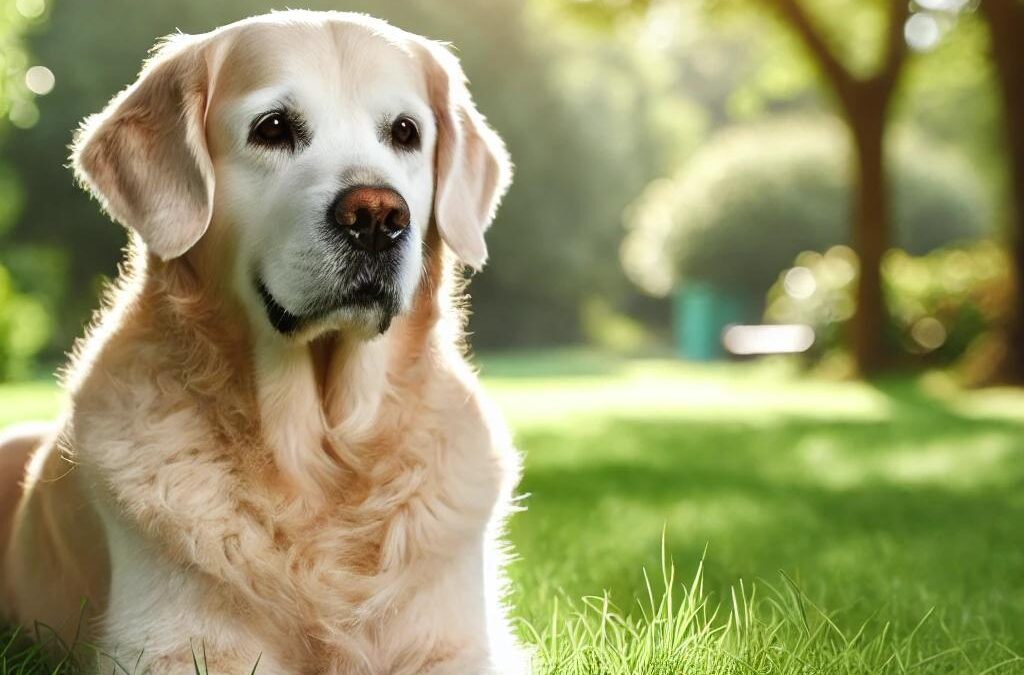
經過 TCMVET | 2024 年 9 月 5 日 | 狗癌症和腫瘤
二手菸長期以來因其對人類的有害影響而聞名,也與寵物(尤其是狗)的嚴重健康問題有關。對於接觸二手菸的狗來說,最令人擔憂的健康風險之一是肺部腫瘤的可能性增加。儘管肺癌在狗中相對罕見,但研究表明,接觸香菸煙霧的狗患此類癌症的風險可能明顯更高。在這篇文章中,我們將探討二手菸對狗的危害、肺部腫瘤的跡象,以及您可以採取的保護寵物的步驟。
二手菸如何影響狗狗
二手菸由燃燒香菸、雪茄或其他菸草製品釋放的有毒化學物質以及吸菸者呼出的煙霧組成。生活在吸菸家庭中的狗會接觸這些有害物質,隨著時間的推移,這些物質會在它們的體內累積。
就像人類一樣,狗狗接觸二手菸會導致呼吸道問題、刺激和慢性肺部疾病。然而,長期接觸最嚴重的後果是肺部腫瘤的風險增加,尤其是老年犬。這些腫瘤可以在肺部、支氣管甚至鼻道中形成,這取決於狗的體型和品種。
為什麼狗狗容易受到二手菸的影響?
- 敏感呼吸系統
狗的呼吸系統很敏感,它們的肺部無法承受長時間接觸菸草煙霧中的有害化學物質。鼻子較短的品種,如鬥牛犬、哈巴狗和拳師犬,特別容易吸入毒素,因為它們的鼻道過濾能力較差。
- 靠近煙霧
狗經常與主人呆在一起,這使它們更容易吸入二手煙。由於狗傾向於躺在地板上,因此它們也會暴露於三手煙中,三手煙由沉積在地毯、家具和寵物床等表面的有毒殘留物組成。隨著時間的推移,這些化學物質會在狗的肺部積聚並增加癌症的風險。
- 年長的狗的免疫系統較弱
年長的狗,尤其是 10 歲以上的狗,免疫系統較弱,這使它們更容易受到二手菸的有害影響。隨著狗的免疫系統隨著年齡的增長而下降,它們修復受損細胞的能力也會減弱,增加了癌症的可能性。
二手菸與狗肺部腫瘤之間的聯繫
研究表明,與生活在無菸環境中的狗相比,生活在吸菸家庭中的狗患肺癌的風險更高。這種風險增加是由於菸草煙霧中含有致癌物質,如尼古丁、甲醛和苯,隨著時間的推移,這些物質會損害肺部組織。吸入這些有毒物質會引起肺部細胞變化,導致惡性腫瘤的發展。
某些犬種由於遺傳易患癌症或呼吸道敏感性,可能面臨更高的風險。例如,像牧羊犬和灰狗這樣的長鼻子品種往往更容易患鼻癌,而短鼻子品種更容易患肺癌。
狗狗肺部腫瘤的跡象
檢測狗的肺部腫瘤可能很困難,因為在癌症進展之前可能不會出現症狀。然而,一些可能表明肺癌的常見跡象包括:
- 持續咳嗽:經治療無法緩解的慢性咳嗽可能是肺癌的徵兆。
- 呼吸困難:呼吸困難或呼吸急促可能表示肺部有問題。
- 嗜睡和疲勞:能量水平明顯下降可能是疾病的徵兆。
- 減肥:不明原因的體重減輕可能表示有嚴重的健康問題。
- 食慾不振:對食物缺乏興趣是肺癌的另一個潛在指標。
如果您的狗出現任何這些症狀並且接觸過二手煙,尋求獸醫的幫助至關重要。早期發現肺部腫瘤可以顯著改善治療效果。
犬肺癌的診斷和治療
當懷疑患有肺癌時,獸醫會進行 X 光或超音波等診斷測試,以檢查肺部是否有異常生長。也可以進行活組織檢查以確定生長是否是惡性的。一旦確診,治療方案可以包括:
- 手術:如果腫瘤是局部的,可以手術切除。這通常是早期肺癌的最佳治療選擇。
- 化療和放射治療:如果無法進行手術或癌症擴散,可以使用化療和放射治療來縮小腫瘤並減緩疾病的進展。
- 安寧療護:對於晚期肺癌,可能會建議進行安寧療護來控制症狀並改善狗狗的生活品質。
如何保護你的狗免受二手煙的侵害
保護您的狗免受二手煙危害的最佳方法是創造一個無菸環境。您可以採取以下幾個步驟:
- 請勿在室內吸煙:如果您吸煙,請在室外並遠離寵物的地方吸煙,以盡量減少它們接觸有害化學物質的機會。
- 避免在封閉空間內吸煙:切勿在車內或其他您的狗可能接觸到濃煙的密閉空間內吸煙。
- 定期清潔你的家:經常用吸塵器吸地毯並清洗狗狗的床上用品,以清除表面的三手煙殘留物。
- 戒菸:保護您的狗和您自己免受吸煙有害影響的最有效方法是完全戒菸。
二手菸對狗的健康構成嚴重危害,增加它們患肺腫瘤和其他呼吸道疾病的風險。吸煙的寵物主人應該意識到危險,並採取措施盡量減少狗狗接觸菸草煙霧。透過創造無菸環境,您可以幫助保護您的狗的健康並降低肺癌和其他疾病的可能性。

經過 TCMVET | 2024 年 9 月 5 日 | 狗癌症和腫瘤
隨著狗狗年齡的增長,它們變得更容易受到各種健康問題的影響,包括癌症。一種對老年犬影響尤為嚴重的癌症是肺癌。雖然狗的肺癌相對罕見,但年齡較大的狗患這種疾病的風險更高。了解這種風險增加背後的原因以及老年犬患肺癌的症狀可以幫助寵物主人採取預防措施並確保早期發現。
為什麼老年犬罹患肺癌的風險更大?
- 自然老化過程
隨著狗狗年齡的增長,它們的身體細胞再生和免疫功能會自然下降。這意味著年齡較大的狗的細胞更有可能發生突變,從而導致癌症的發生。肺部細胞和體內其他組織一樣,都會經歷這個過程,讓老年犬更容易罹患肺部腫瘤。
- 較長時間接觸環境毒素
與年幼的狗相比,年長的狗接觸環境毒素的時間更長。污染物、化學物質甚至二手菸等毒素會隨著時間的推移而在他們的體內累積。這些物質會損害肺組織,使腫瘤更容易形成。生活在城市環境或吸煙的家庭中的狗可能面臨更高的風險。
- 免疫系統減弱
免疫系統在癌細胞擴散之前識別和消滅癌細胞方面發揮著至關重要的作用。然而,隨著狗狗年齡的增長,它們的免疫系統會減弱,使其消除異常細胞的效率降低。免疫功能的下降會增加老年犬罹患肺癌的可能性。
- 慢性呼吸系統疾病
年長的狗更容易患有慢性呼吸道疾病,例如支氣管炎或感染,隨著時間的推移,這些疾病會削弱肺組織。肺部的慢性發炎會創造一個更有可能繁殖癌細胞的環境。隨著年齡的增長,有呼吸道疾病史的狗狗應該密切監測肺癌的跡象。
老年犬肺癌的常見症狀
狗的肺癌在早期通常沒有明顯的症狀,因此很難被發現。然而,隨著疾病的進展,可能會出現某些症狀。這些包括:
- 持續咳嗽:隨著時間的推移持續不斷的乾咳可能是肺癌的早期徵兆。
- 呼吸困難:呼吸困難或呼吸短促可能表示肺部有問題。
- 昏睡:能量水平明顯下降或不願意運動可能是一個警告信號。
- 食慾不振:如果您的老狗突然對食物失去興趣,這可能是生病的徵兆。
- 不明原因的體重減輕:快速或不明原因的體重減輕通常是狗狗癌症的症狀。
- 鼻涕:鼻子出現任何異常分泌物可能與肺部問題有關。
如果您的老年犬出現任何這些症狀,有必要諮詢獸醫進行徹底檢查。早期發現肺癌可以提高成功治療的機會。
老年犬肺癌的診斷
如果懷疑老年犬患有肺癌,獸醫通常會開始進行 X 光或超音波等影像檢查,以檢查肺部是否有腫瘤。這些測試可以揭示任何異常生長的大小、位置和擴散。在某些情況下,可能需要 CT 掃描或活檢等額外測試來確認診斷並確定肺癌類型。
老年犬的肺癌類型
有幾種類型的肺癌會影響狗,最常見的是 腺癌,起源於肺組織內壁的細胞。其他類型包括 鱗狀細胞癌 和 支氣管癌。這些癌症的侵襲性和擴散(轉移)至其他器官的可能性各不相同。
在老年犬中,由於免疫系統減弱和長期暴露於危險因素,腫瘤通常更具侵襲性。
老年犬肺癌的治療選擇
老年犬肺癌的治療取決於癌症的類型和分期。常見的治療方案包括:
- 手術:如果腫瘤是局部的且尚未擴散,可以選擇手術切除受影響的肺葉。如果癌症及早發現,這可能是一種非常有效的治療方法。
- 化療:化療可用於無法進行手術或癌症擴散到身體其他部位的情況。化療有助於減緩疾病的進展,但可能無法治癒疾病。
- 放射治療:放射有時與手術或化療結合使用,以縮小腫瘤並減輕症狀。
- 安寧療護:在癌症晚期的情況下,可能會建議進行安寧療護,以改善狗的生活品質並控制疼痛或呼吸困難等症狀。
如何預防老年犬肺癌
雖然肺癌不能總是預防,但您可以採取一些措施來降低您的狗患肺癌的風險:
- 避免二手煙:不要在您的狗周圍吸煙,因為接觸二手煙會增加肺癌的風險。
- 讓你的狗保持活躍:定期運動有助於維持肺部健康並增強免疫系統。
- 提供健康的飲食:富含抗氧化劑的均衡飲食有助於支持愛犬的整體健康。
- 定期獸醫檢查:每年或每兩年一次的獸醫檢查對於及早發現任何癌症跡象至關重要,尤其是對於老年犬。
隨著狗狗年齡的增長,由於免疫系統減弱、長期接觸毒素和慢性呼吸道疾病等因素,它們變得更容易患肺癌。寵物主人應該注意老年犬的肺癌症狀,如果有任何跡象,請尋求獸醫護理。早期診斷和適當的治療可以提高狗的生活品質和壽命。

經過 TCMVET | 2024 年 9 月 5 日 | 狗癌症和腫瘤
狗的原發性肺部腫瘤極為罕見,十萬隻狗中只有四隻受到影響。儘管罕見,但近年來犬類肺部腫瘤的診斷有所增加。這種上升可能是由於狗的壽命更長,這自然使它們面臨更多與年齡相關的疾病。此外,接觸二手菸的增加也被認為是可能的影響因素。雖然原發性肺癌很難被發現,但了解其原因和危險因素可以幫助狗主人保持警惕並採取必要的預防措施。
什麼是狗的原發性肺部腫瘤?
狗的原發性肺部腫瘤是起源於肺組織本身的生長,而不是繼發性腫瘤,繼發性腫瘤從身體的其他部位擴散到肺部。雖然這些類型的腫瘤很罕見,但最常見於老年犬,平均診斷年齡為 10 歲。與其他形式的癌症不同,原發性肺部腫瘤似乎沒有表現出任何品種或性別傾向,這意味著所有狗都可能面臨風險。
原發性肺部腫瘤的類型
狗最常見的原發性肺部腫瘤類型是 腺癌,佔犬類所有原發性肺癌的 80%。腺癌發生在肺組織內層,主要影響支氣管、細支氣管或肺泡。這些腫瘤的範圍從生長緩慢到高度侵襲性。
第二個最常見的類型是 鱗狀細胞癌,它出現在氣道內壁的細胞中。雖然鱗狀細胞癌不像腺癌那麼普遍,但其風險仍然很大。
其他較不常見的狗原發性肺部腫瘤類型包括:
這些腫瘤類型中的每一種都在診斷和治療方面提出了獨特的挑戰。
原因和風險因素
- 老化
狗狗罹患肺癌的主要危險因子之一是年齡。原發性肺部腫瘤最常見於 10 歲以上的狗。由於獸醫護理和營養的進步,狗的壽命更長,癌症等與年齡相關的疾病的可能性自然增加。
- 二手菸
就像人類一樣,二手菸與狗患肺癌的風險增加有關。生活在吸菸家庭的狗可能會吸入致癌物質,隨著時間的推移,這可能會損害它們的肺組織,導致腫瘤的發展。
- 環境毒素
接觸化學物質、石棉和其他空氣傳播的毒素等環境污染物也可能增加狗狗肺部腫瘤的風險。空氣污染更常見的城市環境可能會增加此類癌症的風險。
- 原有健康狀況
某些先前存在的健康狀況,如慢性支氣管炎或肺部感染,可能會削弱肺部功能,並可能增加癌性腫瘤的風險。有呼吸道疾病史的狗隨著年齡的增長應受到密切監測。
- Genetics
雖然原發性肺腫瘤沒有特定的品種易感性,但基因突變或遺傳因素在某些情況下仍可能發揮作用。然而,該領域還需要更多的研究來建立明確的遺傳連結。
原發性肺部腫瘤的診斷
診斷狗的原發性肺部腫瘤可能具有挑戰性。症狀通常要等到腫瘤顯著生長時才會出現,這使得早期發現變得困難。需要注意的常見跡象包括:
- 持續咳嗽
- 呼吸困難
- 昏睡
- 食慾不振
- 不明原因的體重減輕
獸醫可能會進行胸部 X 光檢查或超音波檢查,以檢測肺部是否有任何異常生長。然而,這些影像有時可能會產生誤導,因為肺膿瘍、囊腫或肉芽腫(由真菌感染或寄生蟲引起)等非癌性疾病可能會模仿腫瘤的外觀。確診通常需要進行活檢以確定腫塊是否是惡性的。
治療方案
一旦確診,原發性肺癌的治療計劃將取決於腫瘤的類型、大小和階段。 手術切除 腫瘤的切除是最常見和有效的治療方法,特別是當腫瘤局限於一個肺葉並且尚未轉移時。狗手術後恢復的機會很大,因為肺部可以再生。
在無法進行手術的情況下, 化療 或者 放射治療 可以考慮,特別是對於更具侵襲性或無法手術的腫瘤。然而,這些治療通常旨在延長生命而不是提供治癒。
雖然狗的原發性肺部腫瘤很少見,但由於壽命的延長和接觸二手菸等環境因素,發生率似乎正在上升。狗主人應保持警惕,尤其是隨著寵物年齡的增長,如果出現任何呼吸道問題,請立即尋求獸醫護理。早期診斷和治療可以顯著提高狗的生活品質和壽命。

經過 TCMVET | 2024 年 9 月 5 日 | 狗癌症和腫瘤
狗的肝癌雖然不是最常見的癌症形式,但如果不及早發現,可能會對寵物的健康構成嚴重威脅。根據研究,肝臟腫瘤約佔所有犬類腫瘤的1.5%。儘管這一比例相對較小,但早期發現對於成功治療起著至關重要的作用。了解肝癌的症狀和類型可以幫助寵物主人確保及時為他們的狗提供獸醫護理。
什麼是狗的肝癌?
在許多情況下,狗的肝臟腫瘤是轉移性的,這意味著它們是從身體的其他部位擴散的,而不是起源於肝臟本身。這些轉移性腫瘤通常是良性的,這提供了更有利的預後。
然而,在某些情況下,狗可能會出現直接從肝臟開始的原發性肝臟腫瘤。狗最常見的原發性肝癌類型是 肝細胞癌,佔原發性肝癌的50%以上。儘管這些腫瘤往往局限於肝臟,但它們通常是惡性的並且治療起來具有挑戰性。
犬肝癌的原因與危險因子
狗狗罹患肝癌的確切原因尚不清楚。與其他一些癌症不同,肝癌似乎沒有特定的品種傾向。然而,年齡是一個重要因素,肝癌在 10 歲以上的狗中更為常見。一些研究還表明,雄性狗的風險可能略高,但這尚未得到最終證明。
狗肝癌的症狀
及早發現肝癌可以大幅改善治療效果。寵物主人應注意以下症狀,如果發現任何這些跡象,請尋求獸醫的幫助:
- 食慾不振
- 不明原因的體重減輕 (特別是體重快速減輕超過10%)
- 嗜睡或疲勞
- 口渴感增加
- 嘔吐或腹瀉
- 腹部明顯腫塊
- Jaundice (皮膚或眼睛發黃)
- 頻尿或尿中有血
- 混亂或迷失方向
這些症狀可能表示肝癌,但也可能與其他健康問題有關。去看獸醫以獲得正確的診斷很重要。
診斷狗的肝癌
如果獸醫懷疑患有肝癌,他們通常會從身體檢查開始,以檢測腹部區域是否有任何腫塊或異常。可以進行血液和尿液檢查來評估肝功能。然而,診斷肝癌最明確的方法是透過影像學檢查,例如 X光片 或者 超音波,可以辨識肝臟中的腫瘤或生長物。
狗的肝癌類型
狗的肝癌根據其外觀和擴散方式進行分類:
- 巨大腫瘤:這些是大的、單一的腫塊,通常形成於肝臟的一個區域。與其他類型相比,它們傳播的可能性較小。
- 結節性腫瘤:這些較小的腫塊出現在肝臟內的多個位置,並且更有可能轉移到其他器官。
- 瀰漫性癌症:這種形式由分散在整個肝臟的癌細胞組成,由於沒有明顯的腫瘤需要切除,因此很難治療。
A 肝細胞腺瘤 指的是良性肝臟腫瘤,雖然沒有那麼危險,但根據其大小和位置可能仍需要手術切除。
狗肝癌的治療選擇
犬肝癌的治療計劃會根據腫瘤的類型、大小和擴散而有所不同。常見的治療方法包括:
- 手術切除:許多肝癌最有效的治療方法是手術切除腫瘤。由於肝臟可以再生,狗在手術後通常會恢復良好,儘管它們可能需要持續的飲食和健康管理。
- 化療和放射治療:根據癌症的階段和類型,這些療法可能建議與手術結合或作為獨立治療。
- 藥物:某些癌症可以透過有助於減緩其進展或減輕症狀的藥物來治療。
每個肝癌病例都是獨特的,獸醫腫瘤學家可以根據您的狗的具體情況提供個人化的治療建議。
狗的肝癌是一種嚴重的疾病,需要早期發現並及時治療以獲得最佳結果。了解症狀,例如突然體重減輕、黃疸或明顯的腹部腫塊,可以幫助狗主人迅速採取行動。定期進行獸醫檢查並監測您的狗的健康狀況至關重要,特別是對於年長的狗,以便及早發現肝癌的任何跡象。

經過 TCMVET | 2024 年 9 月 5 日 | 狗癌症和腫瘤
癌症是狗的主要健康問題之一,影響著許多品種,無論其大小、年齡或血統如何。然而,某些犬種在基因上比其他犬種更容易患某些類型的癌症。了解哪些品種的狗面臨更高的風險可以幫助主人對寵物的健康更加警惕和主動。在本文中,我們將探討更容易罹患癌症的狗品種以及寵物主人應該注意哪些跡象。
最容易罹患癌症的品種
- 金毛尋回犬 黃金獵犬是最著名的容易罹患癌症的品種之一。研究表明,大約有 60% 的金毛尋回犬在其一生中會患上某種形式的癌症,其中血管肉瘤和淋巴瘤是最常見的。這些癌症可能具有侵襲性,因此早期發現至關重要。
- 拳擊手 拳師犬是另一種高度容易罹患癌症的品種,尤其是影響皮膚的肥大細胞瘤。他們也容易患淋巴瘤和腦腫瘤。定期與獸醫檢查可以幫助在這些問題危及生命之前發現它們。
- 伯恩山犬 伯恩山犬罹患組織細胞肉瘤的風險很高,這是一種特別侵襲性的癌症,會影響脾臟、肝臟和其他器官。不幸的是,這種癌症的預後往往很差,這就是為什麼常規健康監測至關重要。
- 羅威納犬 羅威納犬通常受到骨肉瘤(一種骨癌)的影響。這種侵襲性癌症可以迅速擴散,通常需要截肢受影響的肢體。應立即解決早期症狀,例如跛行或四肢腫脹。
- 德國牧羊犬 眾所周知,德國牧羊犬會患血管肉瘤,特別是在脾臟或心臟。這種類型的癌症通常在晚期才被診斷出來,因為它幾乎沒有早期症狀,因此定期獸醫檢查對於該品種尤其重要。
- 拉布拉多獵犬 拉布拉多獵犬雖然通常健康,但也容易罹患癌症,特別是淋巴瘤和肥大細胞瘤。這些癌症會影響多個器官,需要立即治療以獲得最佳預後。
- 比格犬 比格犬比其他品種更容易罹患膀胱癌。膀胱癌雖然可以治療,但如果不及早發現,可能會迅速擴散。比格犬的主人應留意尿中帶血或排尿困難等跡象。
- 貴賓犬 標準貴賓犬容易罹患多種癌症,包括淋巴瘤和血管肉瘤。定期獸醫檢查和健康的生活方式有助於降低風險並及早發現癌症。
需要注意的跡象
狗的癌症症狀可能因腫瘤的類型和位置而異,但常見跡象包括:
- 不明原因的體重減輕
- 身體上有腫塊或腫塊
- 呼吸困難
- 四肢跛行或腫脹
- 食慾不振
- 異常出血或分泌物
如果出現任何這些症狀,盡快諮詢獸醫至關重要。
早期發現與預防
儘管沒有保證預防癌症的方法,但早期發現可以顯著提高狗的生存機會。定期獸醫檢查、均衡飲食和維持健康體重可以降低狗狗罹患癌症的風險。基因檢測對高風險品種的主人也有幫助,因為它可能表明對特定類型癌症的易感性。
雖然許多犬種都容易罹患癌症,但早期檢測和預防性護理可以對治療結果產生重大影響。寵物主人應隨時了解其品種的健康風險,並與獸醫保持定期溝通,以確保他們的狗過著長壽、健康的生活。

經過 TCMVET | 2024 年 9 月 3 日 | 狗癌症和腫瘤
黑色素瘤是一種影響負責產生黑色素的黑色素細胞的癌症,黑色素是為狗的皮膚、毛皮和眼睛提供顏色的色素。雖然任何狗都可能患有黑色素瘤,但某些品種的狗由於其基因組成而更容易患這種疾病。了解遺傳學在犬黑色素瘤中的作用並了解哪些品種的風險較高,可以幫助寵物主人採取積極措施來監測和管理狗的健康。本文探討了與犬黑色素瘤有關的遺傳因素,確定了風險最高的品種,並提供了有關注意事項的提示,以確保早期發現。
了解犬黑色素瘤的遺傳學
遺傳學在狗黑色素瘤的發展中扮演重要角色。由於遺傳性基因突變增加了黑色素細胞異常細胞生長的可能性,某些品種更容易罹患黑色素瘤。這些遺傳傾向可能導致某些狗良性(非癌性)和惡性(癌性)黑色素瘤的發生率較高。
研究表明,特定基因與狗患黑色素瘤的風險增加有關。這些基因可以影響黑色素細胞的行為方式,使它們更容易形成腫瘤。雖然確切的遺傳機制仍在研究中,但很明顯,有些狗從父母那裡遺傳了罹患黑色素瘤的較高風險。
黑色素瘤風險較高的品種
某些犬種在遺傳上容易罹患黑色素瘤,尤其是會擴散到身體其他部位的惡性黑色素瘤。一些風險最大的品種包括:
- 可卡犬:可卡犬以其美麗、長的皮毛和富有表情的眼睛而聞名,但它們也容易患黑色素瘤,特別是在口腔和甲床。
- 迷你雪納瑞與巨型雪納瑞:迷你雪納瑞和巨型雪納瑞的黑色素瘤發生率都較高,尤其是甲床和皮膚等區域。定期監測對於這些品種至關重要。
- 金毛尋回犬:這個受歡迎的品種有各種癌症的風險,包括黑色素瘤。金毛尋回犬的皮膚、口腔或眼睛可能會出現黑色素瘤。
- 迷你貴賓犬:迷你貴賓犬是另一種患有黑色素瘤的可能性較高的品種,尤其是甲床和皮膚。業主應保持警惕,檢查是否有任何異常生長。
- 波士頓梗犬:波士頓梗犬具有獨特的斑紋和緊湊的體型,罹患黑色素瘤的風險也較高。口腔黑色素瘤在這個品種中特別常見。
- 蘇格蘭梗:蘇格蘭梗以其剛硬的皮毛和強烈的個性而聞名,容易患黑色素瘤,特別是在皮膚和口腔中。
- 杜賓犬:此品種在遺傳上容易出現各種健康問題,包括黑色素瘤。定期的獸醫檢查對於早期發現很重要。
- 戈登塞特犬和愛爾蘭塞特犬:這兩種塞特犬品種患黑色素瘤的風險較高,這種疾病經常影響皮膚和黏膜。
注意事項:高風險品種的黑色素瘤跡象
如果您的狗屬於上面列出的品種之一,則必須警惕黑色素瘤的跡象。早期發現可以對治療結果產生重大影響。以下是需要注意的事項:
- 異常的腫塊或腫塊:定期檢查狗狗的皮膚是否有任何新的或不尋常的腫塊、腫塊或生長物。黑色素瘤通常表現為深色、色素沉著的腫塊,但也可能色素較少,使它們更難被發現。
- 口腔黑色素瘤:在日常護理過程中註意狗狗的口腔。尋找牙齦、嘴唇或口腔內部是否有黑色或變色的腫塊。口臭、流口水過多和進食困難也可能是口腔黑色素瘤的症狀。
- 甲床腫瘤:如果您的狗經常舔或咀嚼特定的腳趾,或者您發現指甲腫脹或脫落,則可能是甲下黑色素瘤(甲床黑色素瘤)的徵兆。
- 眼睛的變化:眼部黑色素瘤會導致狗的眼睛發生明顯變化,例如眼瞼上出現腫塊、發紅、腫脹或虹膜顏色變化。留意視力受損的跡象,例如撞到物體。
- 行為改變:狗行為的任何突然變化,例如嗜睡、不願移動或疼痛跡象,都應認真對待並由獸醫進行評估。
定期獸醫檢查的重要性
對於患有黑色素瘤風險較高的狗來說,定期進行獸醫檢查至關重要。您的獸醫可以進行徹底的檢查,包括檢查皮膚、口腔、眼睛和指甲是否有黑色素瘤的跡象。早期檢測和介入可以改善被診斷患有黑色素瘤的狗的預後,有可能延長它們的生命並提高它們的生活品質。
除了體檢之外,您的獸醫可能會建議進行診斷測試,例如細針抽吸 (FNA) 或對可疑腫塊進行活檢,以確定它們是否癌變。在某些情況下,X射線或超音波等影像學檢查可用於檢查疾病的轉移(擴散)。
了解遺傳學在犬黑色素瘤中的作用是識別高風險犬並確保早期發現和治療的關鍵。如果您的狗屬於容易罹患黑色素瘤的品種,定期監測和獸醫護理對於早期發現這種疾病至關重要。透過保持資訊靈通和積極主動,您可以幫助保護您的狗的健康和福祉,有可能延長它們的壽命並提高它們的生活品質。






